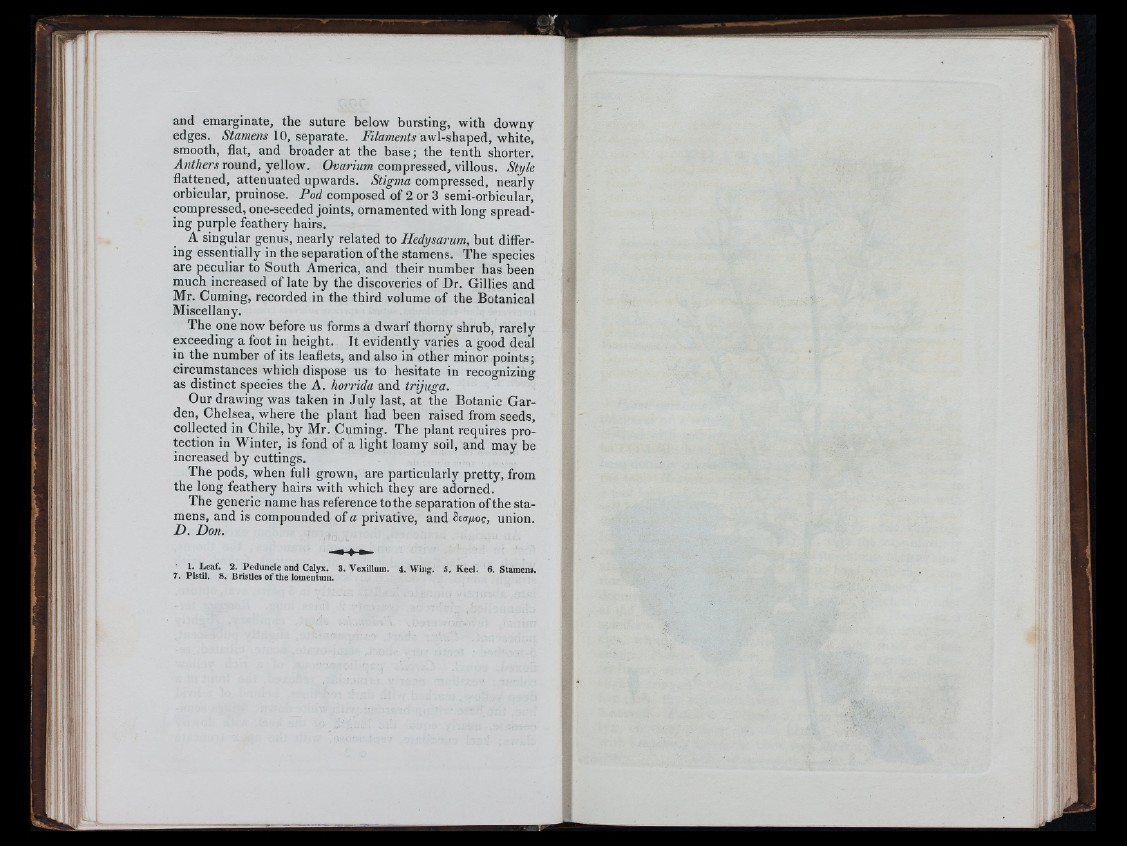
and emarginate, the suture below bursting, with downy
edges. AteOTewi 10, separate. awl-shaped, white,
smooth, flat, and broader at the base; the tenth shorter.
Anthers round, yellow. Ovarium compressed, villous. Style
flattened, attenuated upwards. Stigma compressed, nearly
orbicular, pruinose. Pod composed of 2 or 3 semi-orbicular,
compressed, one-seeded joints, ornamented with long spreading
purple feathery hairs.
A singular genus, nearly related to Hedysarum, but differing
essentially in the separation of the stamens. The species
are peculiar to South America, and their number has been
much increased of late by the discoveries of Dr. Gillies and
Mr. Cuming, recorded in the third volume of the Botanical
Miscellany.
The one now before us forms a dwarf thorny shrub, rarely
exceeding a foot in height. It evidently varies a good deal
in the number of its leaflets, and also in other minor points;
circumstances which dispose us to hesitate in recognizing
as distinct species the A. hórrida and trijuga.
Our drawing was taken in July last, at the Botanic Garden,
Chelsea, where the plant had been raised from seeds,
collected in Chile, by Mr. Cuming. The plant requires protection
in Winter, is fond of a light loamy soil, and may be
increased by cuttings.
The pods, when full grown, are particularly pretty, from
the long feathery hairs with which they are adorned.
The generic name has reference to the separation of the stamens,
and is compounded of a privative, and dtapog, union.
D. Don.
1. Leaf. 2. P ed u n cle and Calyx. 3. Vexillum. 4. Wing. 5. K ee l. 6. Stamen».
7. P istil. 8, Bristles o f the lomentum.